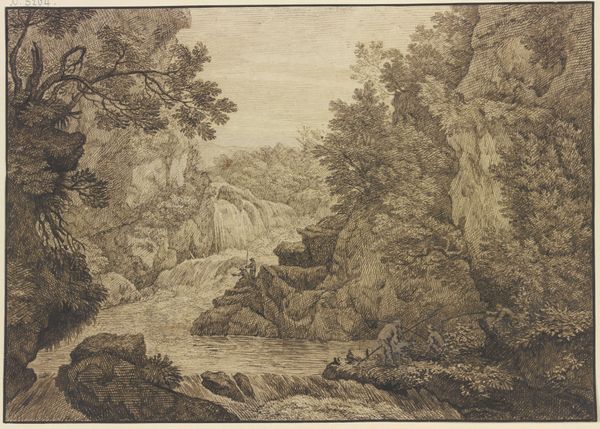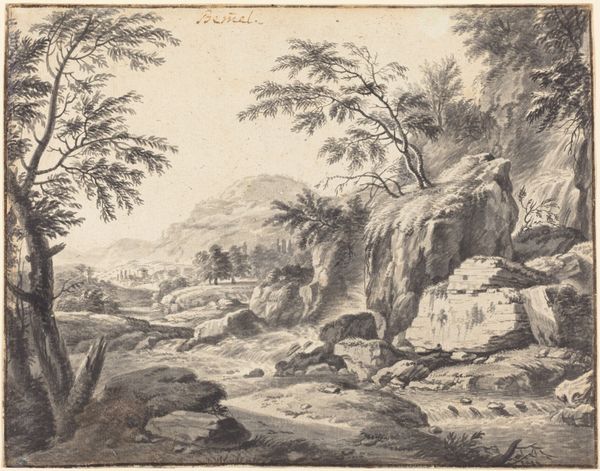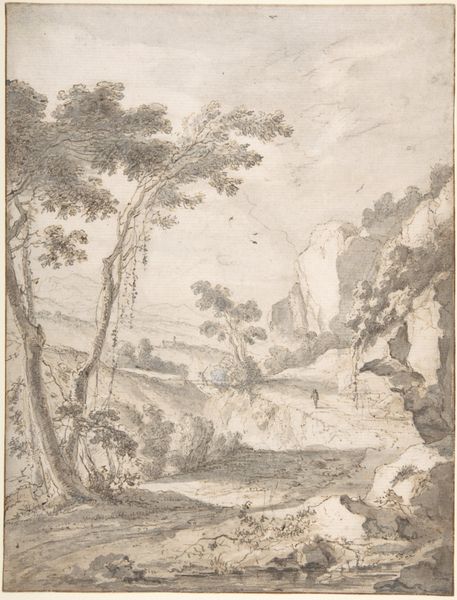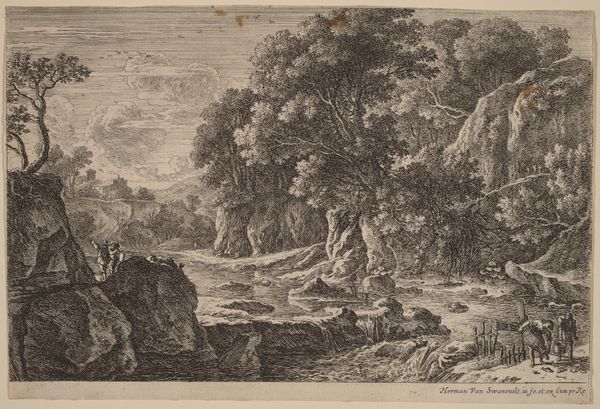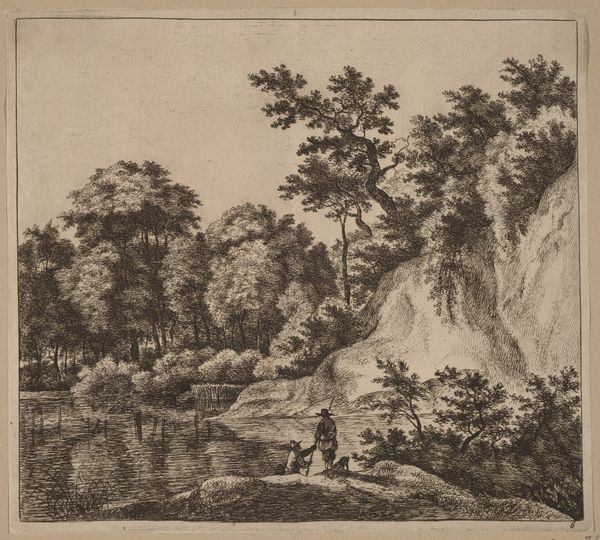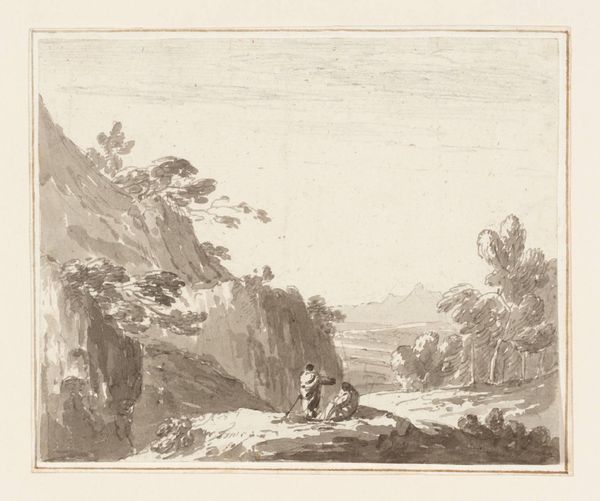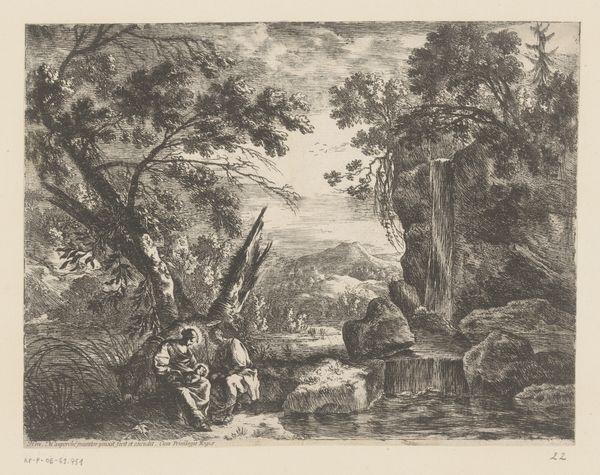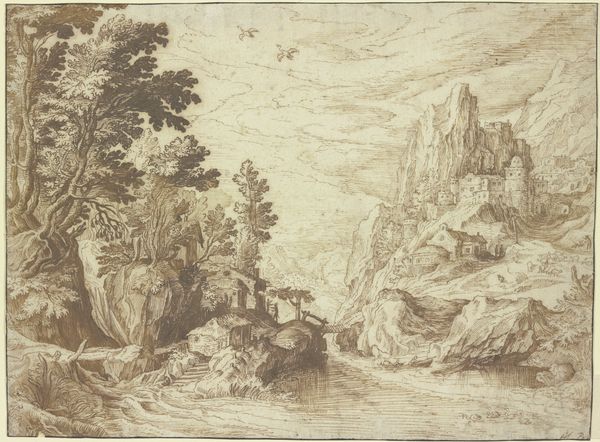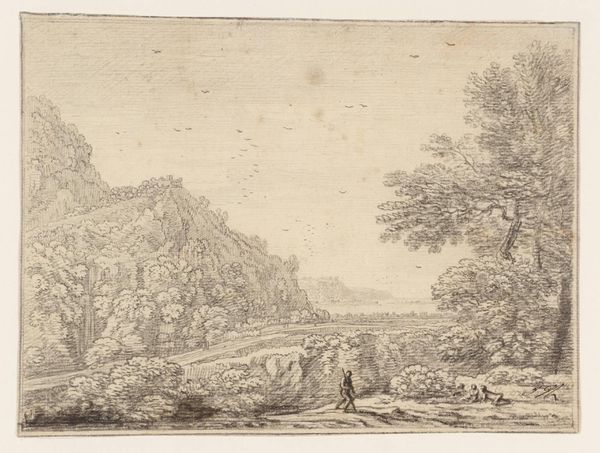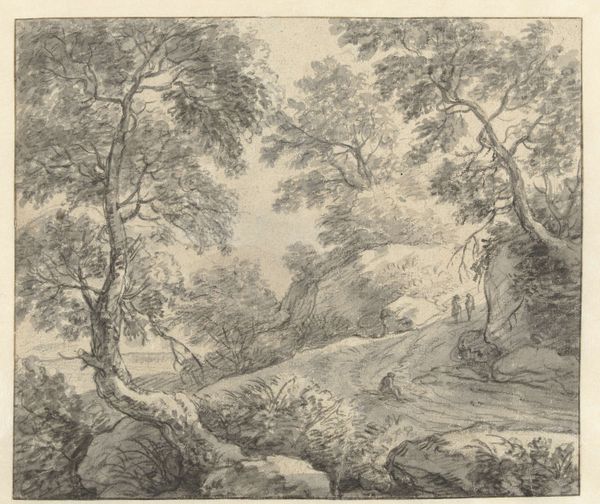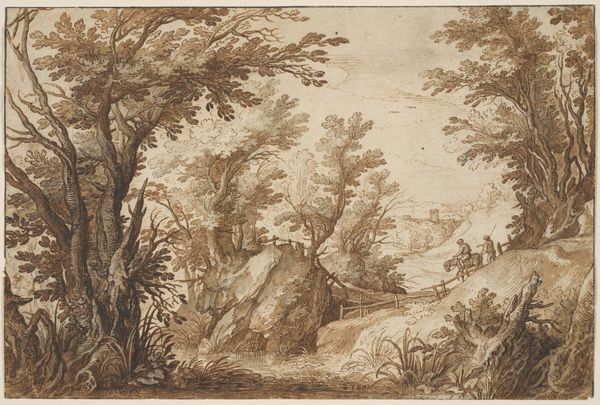
drawing, print, paper, ink, pen
#
drawing
# print
#
landscape
#
figuration
#
paper
#
ink
#
pen
#
genre-painting
Dimensions: 142 × 200 mm
Copyright: Public Domain
Curator: The work before us, rendered in pen and brown ink on paper, is titled "Landscape with Satyr, Goats and Other Figures." It’s attributed to Abraham Genoels II. Editor: It evokes a feeling of Arcadian serenity, doesn't it? The figures, almost hidden within the landscape, suggest a world untouched by the pressures of modern life. A simplified idyll. Curator: Genoels certainly embraced the Claudian aesthetic that was popular during his era. The art market had become very attuned to these scenes. Editor: What fascinates me is how these figures inhabit the scene. That satyr, barely noticeable until you really look, pulls goats across what appears to be a rudimentary bridge, watched over by a reclining figure at the lower-right. It’s almost like a classical frieze come to life. What do you think of the goat iconography? Curator: A potent symbol in art and religion. It goes without saying, within the visual language of Genoels’ moment, this image serves the market tastes rather than spiritual values. We’re deep into a European-wide craze for Arcadian-themed work to grace homes. Editor: But the goat is ancient, as is its complex duality, the animal that can be both sacred offering and scapegoat. Are we to believe all resonance is lost in its domestication by a European art market? Curator: I’m arguing that context must remain relevant; the commercial imperative to churn out images is historically relevant. Think about it, these artworks would have helped to shape our conceptions of a shared Europe. The image is so widespread as to be almost taken for granted now. Editor: And yet, that familiarity might be precisely what makes its continued appeal so resilient. Even when mass-produced, images possess a subconscious power. Look at the way the composition draws your eye back and through to the horizon, always promising a greater vista. That, too, suggests atemporal aspiration, or escape. Curator: So, it’s an industry of escapism and also a mode to express a national aesthetic? I take your point, it is difficult to deny art's broader influence, however faint the artist's original intent. Editor: Precisely. It shows how these images speak, even across centuries and regardless of artist intentions or the original buyers' purpose. They still invite us to find a certain something within them.
Comments
No comments
Be the first to comment and join the conversation on the ultimate creative platform.
